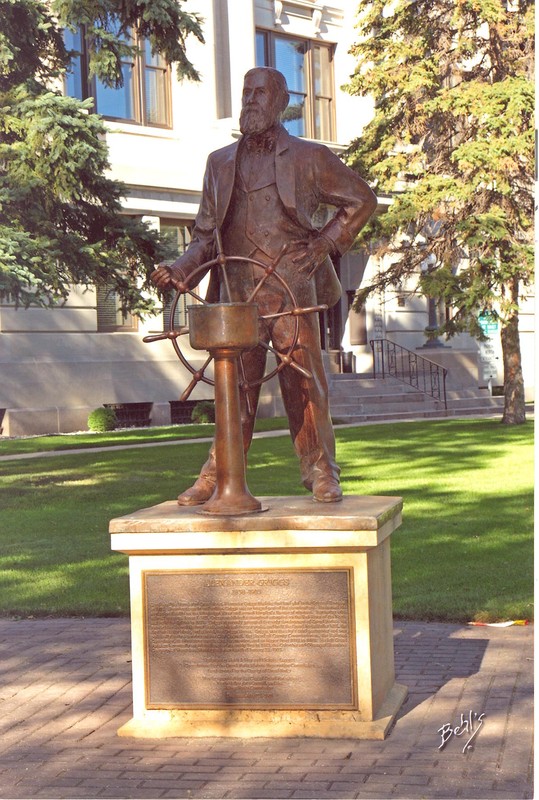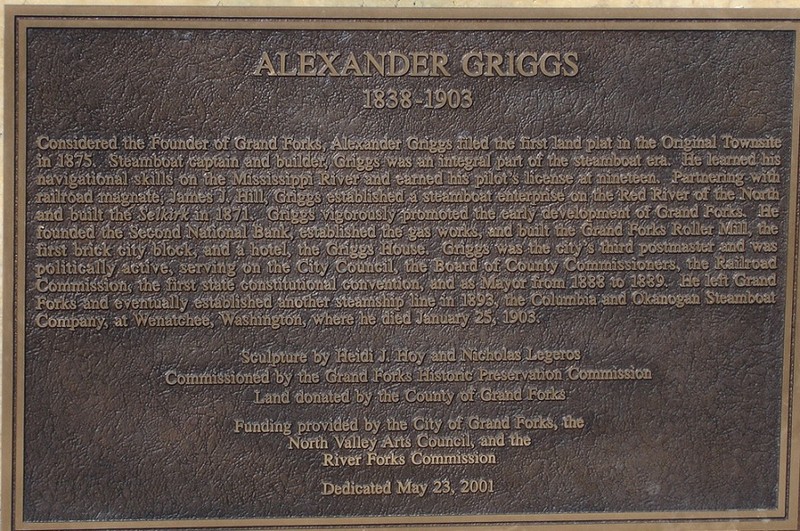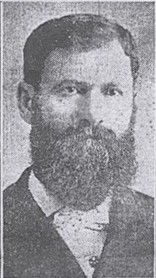Captain Alexander Griggs Statue, Grand Forks
Introduction
Text-to-speech Audio
Images
Captain Alexander Griggs Statue

Captain Alexander Griggs Statue plaque

Obituary photo of Captain Alexander Griggs Statue announcing his death

Backstory and Context
Text-to-speech Audio
Alexander Griggs (1838–1903) was an American steamboat captain and is generally acknowledged as the founder of the city of Grand Forks. Griggs first traveled to the confluence of the Red River of the North and the Red Lake River (the site of present-day Grand Forks) in 1870 using flatboats to carry cargo downstream on the Red River of the North. During the fall of 1870, Griggs and his crew embarked on another such trip through the confluence area, but were stranded when their boat froze in the icy waters of the Red River one evening. The crew built a small cabin and lived there during the winter of 1870-1871. They soon decided that the area would be a good spot for a new town. Others soon joined Griggs at the site and the community of Grand Forks was formed. Griggs officially platted the town site of Grand Forks in 1875.
He also became the fifth mayor of Grand Forks, serving from 1888 to 1889. Griggs was also the city’s third postmaster, served on the Grand Forks City Council, as a Grand Forks County Commissioner, and on the North Dakota state constitutional convention. In addition, he founded the Second National Bank, established a gas works, built the Grand Forks Roller Mill, constructed the first brick commercial building in Grand Forks, and opened a hotel (the Grigg House). A statue of Griggs sits on the grounds of the Grand Forks County Courthouse. Nearby Griggs County North Dakota was also named in honor of the entrepreneur and steamboat captain.
Cite This Entry
Emett , Mike and Clio Admin. "Captain Alexander Griggs Statue, Grand Forks." Clio: Your Guide to History. June 26, 2018. Accessed March 31, 2025. https://theclio.com/entry/28491
Sources
- "Grand Forks History". City of Grand Forks, North Dakota.
- "Historic Grand Forks". Grand Forks County Historical Society.
- "Dimensions - March 2005". University of North Dakota.
- Gannett, Henry (1905). The Origin of Certain Place Names in the United States. Govt. Print. Off. p. 145.

